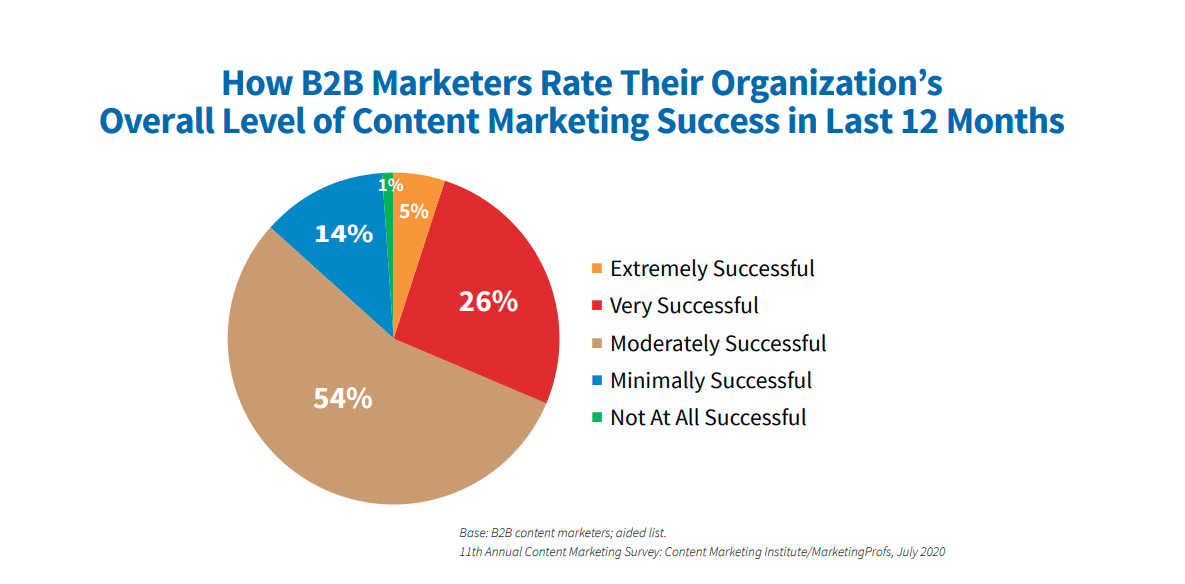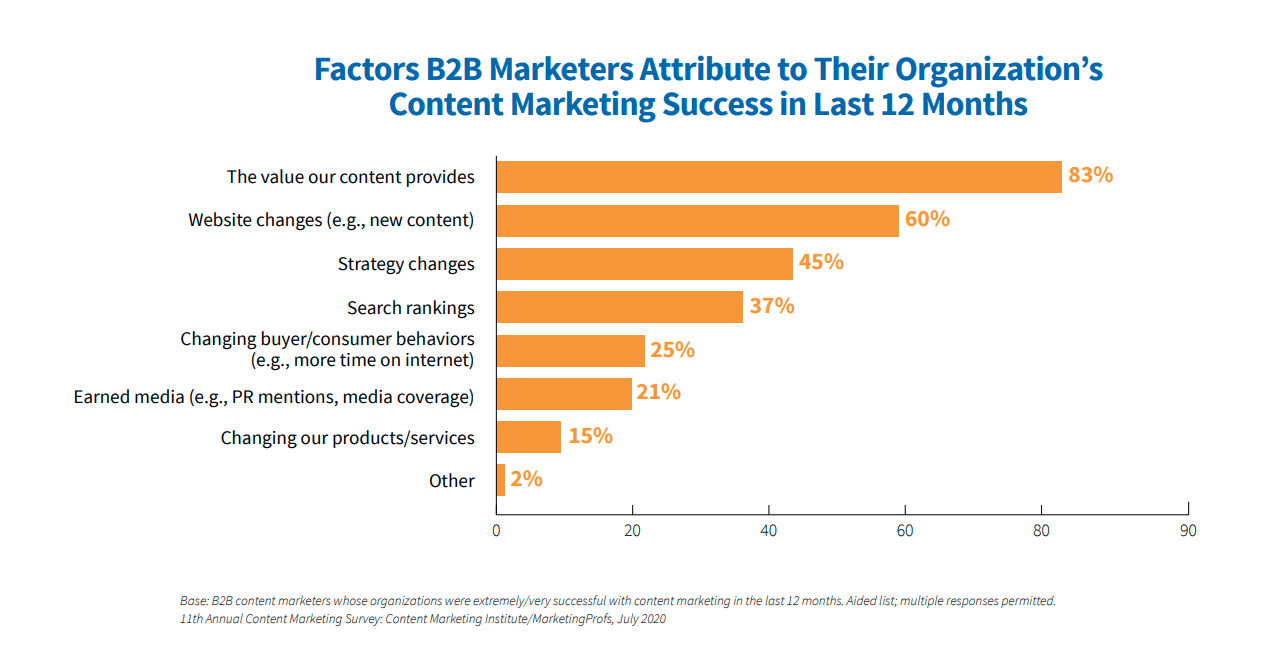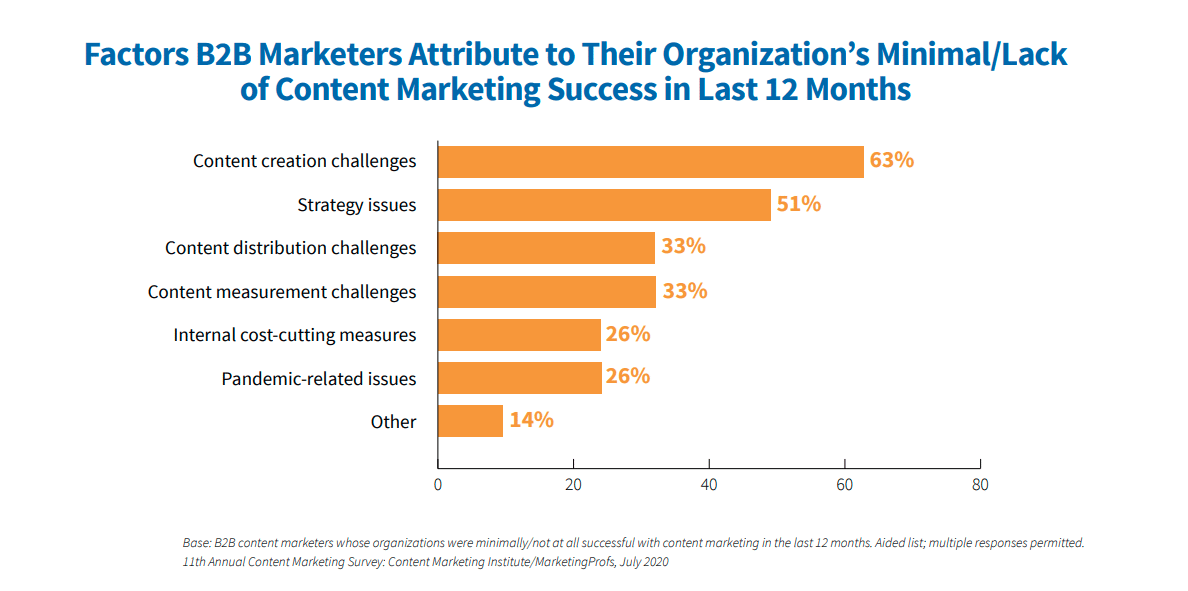
The One Thing That Helps Define Success with Content Marketing
Is anybody successful with content marketing? That’s a big question with different answers. It depends significantly on how an organization measures success.
Without clarity around what success means, you’ll likely never know if you’re hitting the mark. Content marketing with a thoughtful strategy and plan doesn’t usually provide the ROI (return on investment) expected.
So, let’s dive into what success means, how to achieve it, and what you need to sustain it.
Quick Takeaways:
- For anybody to be successful with content marketing, you must define success.
- Defining success includes the goals you want to accomplish and how you’ll track them.
- SMART goals and KPIs are critical in understanding success.
How Do You Define Success for Content Marketing?
The first step in achieving success for content marketing is defining what that means for your organization. You should document this in your content strategy.
Common objectives include:
- Driving more traffic to your website
- Creating more engagement on social media
- More opens and responses from email marketing
- Higher conversions and profits
- Building brand equity
- Improving organic ranking on Google
The good thing is that all these objectives are measurable. To build a pathway to success, you need to prioritize your goals, then document a plan to achieve and track them.
For example, if your goal is to increase website traffic, you’ll need to:
- Publish high-quality content that’s relevant to your audience consistently.
- Ensure content uses best practices for SEO, so it appears in search results.
- Distribute this content where your ideal buyers can consume it (i.e., social media, email newsletters, third-party sites, etc.).
- Track the metrics associated with it, such as pageviews, time on page, conversion on page, and backlinks.
Over time, you’ll learn key insights from this data to make the goal easier to accomplish, such as:
- Learning which distribution channels work best
- Understanding the topics and formats that generate the most traffic
- Gathering cues on buyer behavior based on how they consume content and what actions they take next
But how do you get detailed about goals and metrics? We’ll cover that next.
How Can You Set More Specific Goals?
Now that we’ve reviewed how to define success and determine if it plays out in real life, we should get more specific on content marketing goal setting.
We would recommend these avenues to connect goals to success and metrics.
Set SMART Goals
SMART goals use a specific set of criteria. They aren’t open-ended. Here’s the process:
- S: Specific: Get granular here on what to accomplish, who is responsible, and the steps necessary to achieve it.
- M: Measurable: Quantify how you’ll determine if you meet the goals.
- A: Achievable: Ensure your goals are realistic and not pie in the sky.
- R: Relevant: Create goals relevant to content marketing success that drive your desired ROI from efforts.
- T: Time-Bound: Ground goals with a timeframe for their accomplishment.
Here’s an example of a SMART content marketing goal:
Grow website traffic by 10% by producing 12 content pieces a month that use targeted keywords and via distribution in channels (email, third-party sites, social media). Increasing website traffic should grow conversions and profits. The expectation is that the 10% growth is accomplishable within 90 days.
Below is a quick video with over one million views on setting SMART goals.
After You Set Goals, You Need to Define KPIs
KPIs (key performance indicators) are imperative to content marketing success! They match the goal to the metric. We’ve touched on this with examples, but here’s an expanded look at the process.
Goal: Increase Leads with Gated and Non-Gated Content
KPIs: Conversion rate (landing pages, forms, purchases) and referral pages to conversions
Goal: Boost Customer Engagement
KPIs: Email open rates, social media metrics (likes, shares, follows, mentions), backlinks, time on page, and bounce rate
Goal: Raise Brand Credibility with Thought Leadership Content
KPIs: Website traffic, social media follower increases, media mentions of the brand, and increase or quality of testimonials/reviews
Is Success Prevalent for Content Marketers?
We’ve just gone over what objectives could be, but you may be wondering how often companies believe they are achieving success.
In a CMI (Content Marketing Institute) B2B Content Marketing report, they ask this question.
The majority (54%) said they are moderately successful. However, that’s down 4% from the year prior.

For those that are successful, what were the reasons? The respondents said it was because of value, website changes, strategy changes, and search rankings.

Those who didn’t find success explained why, blaming it on challenges with content creation, strategy, distribution, and measurement.

The caveat in the non-successful group is COVID-19. The pandemic changed how businesses message, market, sell, and more. It’s an outlier, but it wasn’t a detriment to all.
It’s interesting to look at why they believe they were unsuccessful. These issues are recurrent in many organizations. Much of that boils down to a lack of vision and consistency.
These two things are vital for success. Next, we elaborate on this with some final takeaways on success in content marketing.
Successful Content Marketing Businesses Need These Key Things
Buy-In Across the Company
You absolutely need buy-in on content marketing across your organization. Otherwise, you’ll end up in a silo and unsuccessful.
Leadership needs to convey its importance, and content marketing teams have to “sell” its value. That means involving SMEs (subject matter experts) in creation, ensuring sales-marketing alignment, and proposing that all team members be employee advocates.
Show Results
Getting initial buy-in is great, but you need to keep proving why content marketing works. Share metrics with teams that demonstrate how content marketing is contributing to revenue and brand equity.
Employ the Right Technology
To scale content marketing and easily track progress, you need technology. There are a variety of functions that technology can help you with, including:
- Streamlining workflows
- Aggregating data in one source of truth
- Automation of tasks like publishing, posting, email marketing, and other low-skill activities
- Centralizing ideation and strategy to provide transparency
- Lead scoring for each contact based on their actions
Ensure Customers Are Your Largest Stakeholder
Content marketing is all about your audience, not your brand. Therefore, everything you create should resonate with them. It should be educational and helpful, not salesy.
To achieve customer-centricity, you’ll find it’s imperative to put the customer at the center of your content marketing efforts. Don’t create content for your executives or internal clients. That will fall flat.
You can keep your eye on the customer by creating detailed personas and updating them regularly, especially if there are big changes. Learn from your content analytics about what matters to them.
You should also ask them for feedback. Create surveys or urge customer-facing people to solicit their opinion on your content.
Test and Tweak Continuously
Taking chances with content is a good thing. Try something new, based on data and context, that you think would interest your audience.
Be a disruptor with your content, and don’t think you only have narrow parameters to engage your audience. Content marketing success results from testing often and tweaking it along the way.
Finding Success with Content Marketing with a Strong Partner
The brands who are successful with content marketing don’t get there by chance. They have strategies in place, have buy-in, understand their customers, and are always creating content.
That’s not always possible, but we can help.
If you are ready to get more traffic and leads with quality content, check out our Content Marketing Services.
Set up a quick consultation, and I’ll send you a free PDF version of my books. Get started today!






